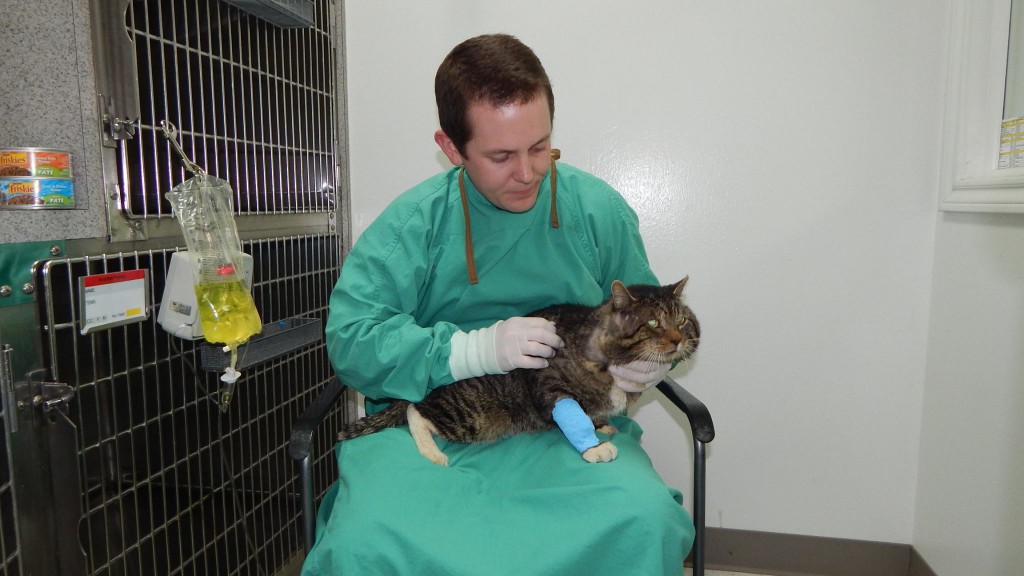Feline Rabies
Once the virus enters the cat’s body, it replicates in the cells of the muscles and then spreads to the closest nerve fibers, including all peripheral, sensory and motor nerves, traveling from there to the CNS via fluid within the nerves. The virus can take up to a month to develop, but once the symptoms have begun, the virus progresses rapidly.
There are two forms of feline rabies: paralytic and furious. In the early symptom stage of feline rabies infection, the cat will show only mild signs of CNS abnormalities. This stage will last from one to three days. Most cats will then progress to either the furious stage, the paralytic stage, or a combination of the two, while others succumb to the infection without displaying any major symptoms.
Furious feline rabies is characterized by extreme behavioral changes, including overt aggression and attack behavior.
Paralytic rabies is characterized by weakness and loss of coordination in the cat, followed by paralysis.
Symptoms
This is a fast-moving virus. The prognosis is poor without immediate treatment. Therefore, if your cat has been in a fight with another animal, or has been bitten or scratched by another animal, or if you have any reason to suspect that your pet has come into contact with a rabid animal (even if your pet has been vaccinated against the virus), you must take your cat to a veterinarian for preventive care immediately.
The following are some other symptoms of feline rabies to watch for in your cat:
- Fever
- Seizures
- Paralysis
- Jaw is dropped
- Inability to swallow
- Muscular lack of coordination
- Unusual shyness or aggression
- Excessive excitability
- Constant irritability/changes in attitude and behavior
- Paralysis in the mandible and larynx
- Excessive, dripping salivation (hypersalivation), or frothy saliva
Causes
The feline rabies virus is a single-stranded RNA virus of the genus Lyssavirus, which is in the family Rhabdoviridae. It is transmitted through the exchange of blood or saliva from an infected animal.
Very rarely, feline rabies can be contracted through breathing in the escaping gases from decomposing animal carcasses. Contracting the virus in this way is rare but it can occur, often in caves with a large population of bats, where the virus is widespread.
Diagnosis
If you suspect your cat has rabies, call your veterinarian immediately. If it is safe to do so, cage, or otherwise subdue your cat, and take it to a veterinarian to be quarantined. If your pet is behaving viciously, or is trying to attack, and you feel you are at risk of being bitten or scratched, you must contact animal control to catch your cat for you.
Your veterinarian will keep your cat quarantined in a locked cage for 10 days. This is the only acceptable method for confirming suspected feline rabies infection. People often confuse rabies with other conditions that cause aggressive behavior, so a laboratory blood analysis is necessary to confirm the presence of the virus. However, blood testing for the virus is not veterinary procedure.
Treatment
Provide proof of vaccination to your veterinarian if your cat has been vaccinated against rabies. If you or anyone came into with the cat’s saliva, or were bitten by your cat, it is advised for them to contact a physician immediately for treatment.
Unfortunately, for unvaccinated animals rabies is always fatal. This usually occurs within 7 to 10 days from when the initial symptoms began.
These are just the basics of feline rabies. Rabies vaccination for your pet is essential. Contact us at All Pets with the link below for more information!
















